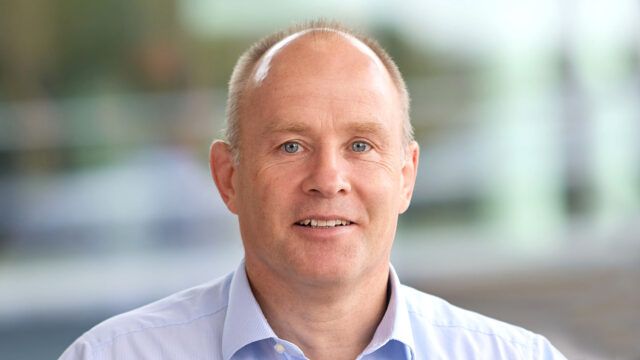Baillie Gifford is planning on opening an office in Singapore shortly as David Henderson (pictured), partner at the firm, told FSA that it feels like “we’re barely getting started in Asia”.
Henderson told FSA that Baillie Gifford had received the green light from the Monetary Authority of Singapore and is targeting an official opening date of 3 September.
The office will comprise a mixture of ESG analysts and client service staff. Initially, Baillie Gifford is sending two analysts from Edinburgh on secondment and expects to hire analysts and client service staff locally.
The head of the office will be Jen Leong, who will relocate from Hong Kong. Leong, who is currently chair of BG Asia Hong Kong, will become CEO of the new entity, BG Asia Singapore, while Henderson will be the chair.
Henderson explained that the new entity will allow Baillie Gifford to better serve its clients in the region.
“The honest answer is it’s quite difficult to operate in Asia without local licensing, without a local presence. It’s just taken us a while to find the right resources to go into Singapore. We can also see other markets around Singapore beginning to open up as well, which will bring the potential for new clients,” he said.
It is hard to think of a bigger success story in the past two decades among European active managers than Baillie Gifford, whose early bets on a handful of growth companies such as Amazon, Alibaba and Tesla, have seen its assets under management swell more than tenfold during that period.
However, much like every other asset manager, the past few years have been much tougher, characterised by outflows, not to mention its growth style of investing has generally fallen out of favour with investors, although Henderson is undeterred, pointing out that there are opportunities to grow its market share across multiple areas.
“To be honest with you it feels like we’re barely getting started in Asia compared with many of our peers. While we have got some big chunks of money from established pots, there are plenty of untapped areas, geographically and in terms of market segments,” he said.
Asian roots
Baillie Gifford can trace its roots in Asia back more than a century when it started financing rubber plantations in British Malaya, although its modern origins stretch back to 1989 when it set up a joint venture with a predecessor of Mitsubishi UFJ Trust & Banking (a client it still holds today and indeed the firm’s largest client in the region in terms of AUM).
Henderson, whose career path is quintessentially Baillie Gifford, having read Industrial Relations at the University of Oxford and begun working at the firm not long after he graduated, was there in the early days of building out the business in Asia.
“There were three of us (on the client servicing side) that covered Asia, the Middle East and Europe, which meant a lot of shoe leather. I was going out to Japan regularly and I thought there has got to be other opportunities for us to grow our business. So I started going to Korea, China, Singapore, Hong Kong, etc. Between 2004 and 2015, our business was built basically on the suitcase model, which means fly in, fly out,” he said.
2015 represented something of a sea change for the firm as it opened an office in Hong Kong, which hosts a mixture of client service, marketing, risk management, compliance, HR and a small trading team. In 2019, it also opened an office in Shanghai, which was primarily focused on investment research.
“I was going out to Japan regularly and I thought there has got to be other opportunities for us to grow our business. So I started going to Korea, China, Singapore, Hong Kong, etc. Between 2004 and 2015, our business was built basically on the suitcase model.”
david henderson, baillie gifford
According to Henderson, the firm currently manages around $30bn in AUM in the region, making it about mid-sized as an asset manager. Australia and Japan are the two largest markets in terms of AUM.
What is striking when speaking with Henderson though is that despite having a relatively lean presence in the region, he identifies relatively few gaps in the firm’s strategy. He talks about doing more in Japan and also speaks passionately about the efforts it has made to grow its footprint in the intermediary channel in the past five years (“you have to go where the money is,” he said), although he is clearly cognisant of the fact that there is no magic formula beyond continuing to deliver for their clients in their investment strategies.
Changes in China
One area though where Bailie Gifford has seen a lot of change lately is in relation to China. The Scottish investment manager has historically been one of the more bullish investors when it comes to China, having started investing in the country back in 1994.
James Anderson, its former manager of the flagship Scottish Mortgage Investment Trust, often drew parallels between Silicon Valley and some of the fast-growing new economy companies operating in China, although, critics have argued that he was too bamboozled by some of the country’s entrepreneurs and failed to properly account for the regulatory and geopolitical risks there.
Regardless of anyone’s views on Anderson (and it is hard to argue with the long-term performance of the Scottish Mortgage Investment Trust under his watch), it has been a painful period for Chinese growth investors, notwithstanding the recent reprieve of the last few months as A-shares have begun to rally again.
Baillie Gifford has responded, in aggregate, by reducing its holdings of Chinese companies. Its Scottish Mortgage Investment Trust exited its holding of Alibaba in 2022, which it had originally invested in back in 2012 when it was still a private company.
“We’ve been attacking China by having investors based in our emerging markets team and investors on the ground in Shanghai. The obvious evolution was to create one single team that brought together the global perspective from Edinburgh and the local insight from Shanghai.”
ben buckler, baillie gifford
It also announced a shake-up of its China equities team earlier this year under the auspices of Linda Lin, who relocated from Shanghai to Edinburgh. Lin also took over as co-manager of the China Growth Investment Trust and the Baillie Gifford China fund alongside Sophie Earnshaw, while Mike Gush and Roderick Snell relinquished their roles on the China-specific funds to focus on Asia Pacific and emerging market strategies.
Ben Buckler, investment specialist director at Baillie Gifford, explains the rationale behind the decision.
“We’ve been attacking China by having investors based in our emerging markets team and investors on the ground in Shanghai. The obvious evolution was to create one single team that brought together the global perspective from Edinburgh and the local insight from Shanghai,” he said.
“We believe that provides some elements of an added edge to how we look at things and there’s no doubt that we would have a better understanding of CATL because of Baillie Gifford’s own history of owning Tesla. And that is very clear in quite a number of different examples we have from the China A-share market and overseas global holdings.”
Typical Baillie Gifford
In some ways, consolidating the company’s China equities business in its main office in Edinburgh is fairly typical for Baillie Gifford, which has generally charted its own course compared with its peers.
While the investment manager has maintained its presence in Shanghai (and indeed it holds the much-coveted private fund management licence, although it has yet to launch a fund on the back of it), it has always taken a bit more of a centralised approach than its peers.
The firm’s approach to investing is unusual among other European active managers as it has largely bet the farm on identifying a handful of outlier companies that will benefit from technological change. It is famously heavily influenced by the academic Hendrik Bessembinder, whose research has showed that only a small number of companies are responsible for the vast majority of stock market gains.
“We keep our business simple. We’re quite a narrow and deep house. We’re focused largely on active growth equity strategies.”
david henderson, baillie gifford
Its culture is also very unique. Its head office has been likened more to a library than a trading room as it famously prizes academic research so much. In its own way as well, it is also unapologetic about its investment approach. “We have little confidence in quarterly earnings and none in the views of investment banks,” Scottish Mortgage Investment Trust’s annual report said bluntly.
While other mid-sized firms have also responded to the shift towards passive investment over the past decade by tying up with one another, the firm has also avoided M&A altogether. Most of its investment managers tend to have joined as graduates or early on in their careers.
“We keep our business simple. We’re quite a narrow and deep house. We’re focused largely on active growth equity strategies,” said Henderson.
Growth investing
That approach has reaped dividends for the firm. If you had invested your money in Scottish Mortgage Investment Trust on the day of Lehman Brothers’ bankruptcy, you would have achieved a 909.66% return on your original investment compared with a 185.47% return on the FTSE All Share index (see chart).

This is not to suggest that Baillie Gifford has had everything its own way though. Its investment philosophy, which favours growth companies, increasingly early stage, has obviously been buttressed by years of ultra-loose monetary policy from central banks around the world.
2022 represented a particularly difficult year for the firm as its growth style of investing fell out of favour due to higher inflation and interest rate hikes from central banks around the globe. For the 12 months to March 31 2023, Scottish Mortgage Investment Trust’s share price fell 33.5% and its net asset value fell 17.8%.
Indeed, even as growth stocks have come back in fashion, at least in the US on the back of the AI boom, the drawdown for a number of its strategies was so large in many cases that, according to FE fundinfo, out of the 32 Baillie Gifford has available in the Investment Association universe in the UK, only two managed to beat the index on a three-year basis: the Baillie Gifford Pacific fund and the Baillie Gifford Responsible Global Equity Income fund.
The concern for Baillie Gifford is that while it has delivered exceptional performance for so long, the extent to which its growth style of investing has dominated in the period after the global financial crisis represents an aberration historically and the firm’s strategies have not been tested of late during a period when value investing is in vogue.
At least in terms of client engagement servicing though, Henderson points to the fact that at least among the more sophisticated investors Baillie Gifford’s, growth investing has started to pique their interest again and that their offer to clients is compelling.
“Clients in Asia are just like any other sophisticated investors, they’ve got access to the best managers in the world so we have to be as competitive as possible. And I think what stands out is we are firmly committed to growth investing,” he said.
“We’re quite high profile with some of the investments we’ve made over the years. We’re active so we seek to deliver exceptional returns, far in excess of the benchmark. That obviously comes with a bit of volatility. Obviously Asian clients quite like ambitious return seeking fund managers.”

















